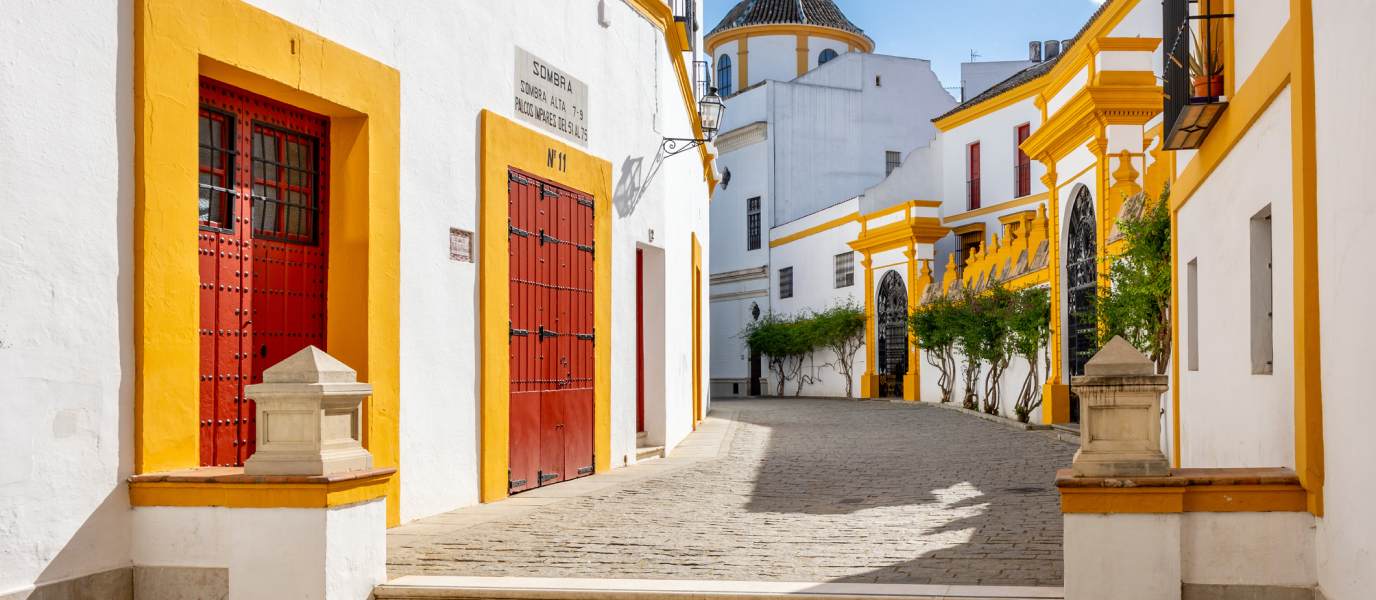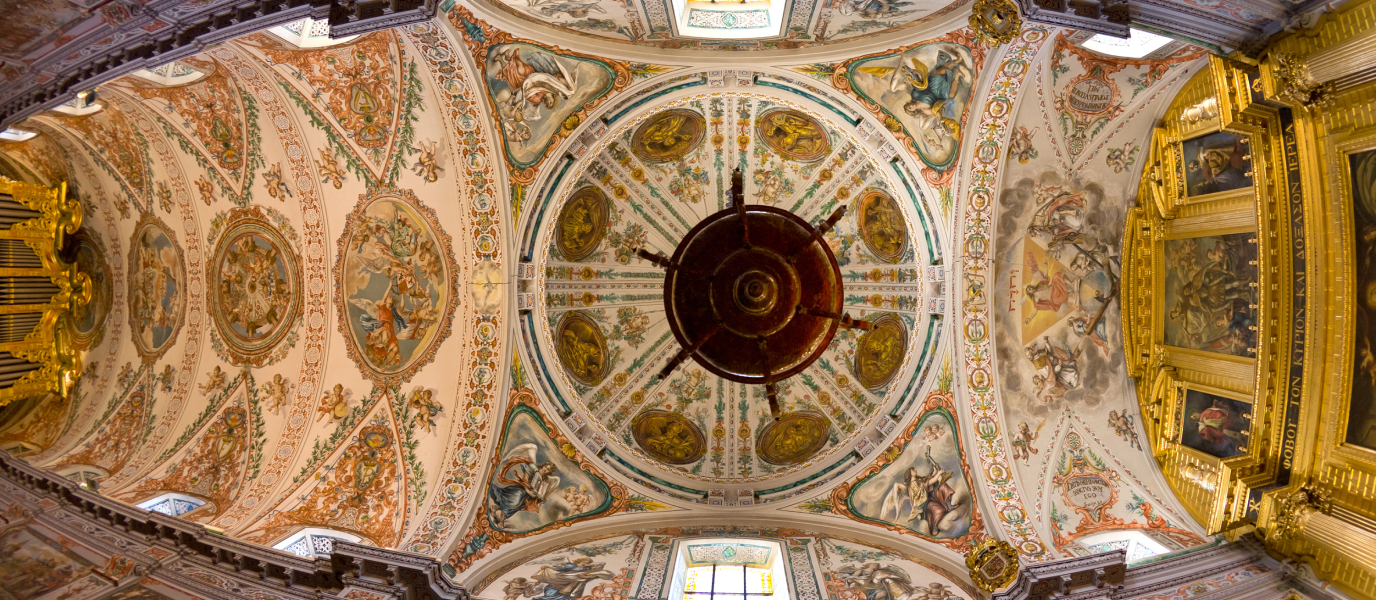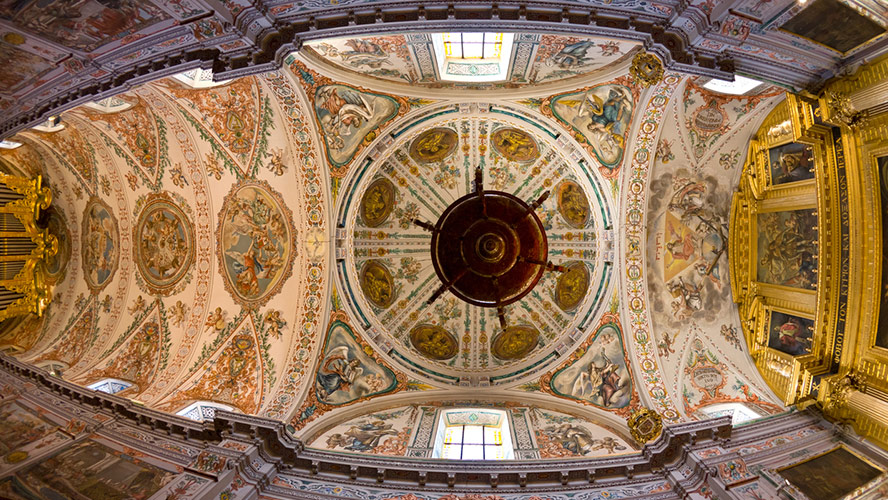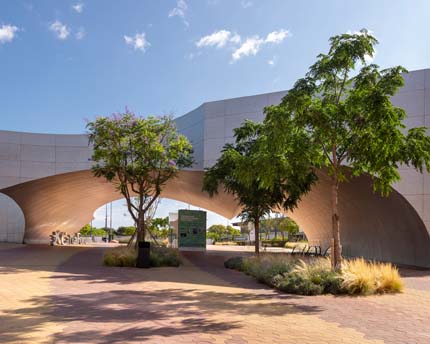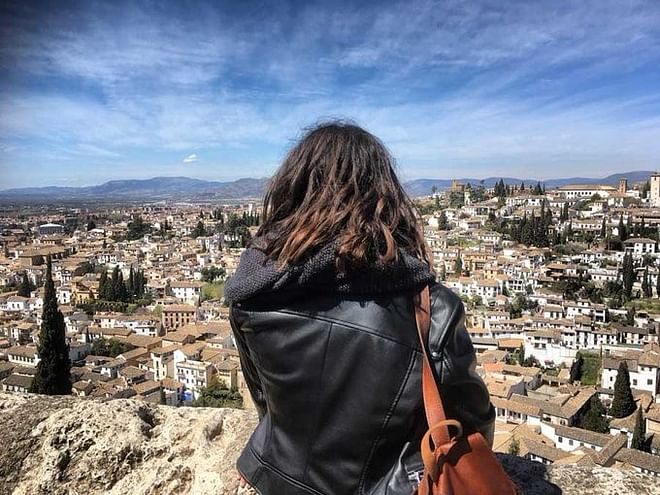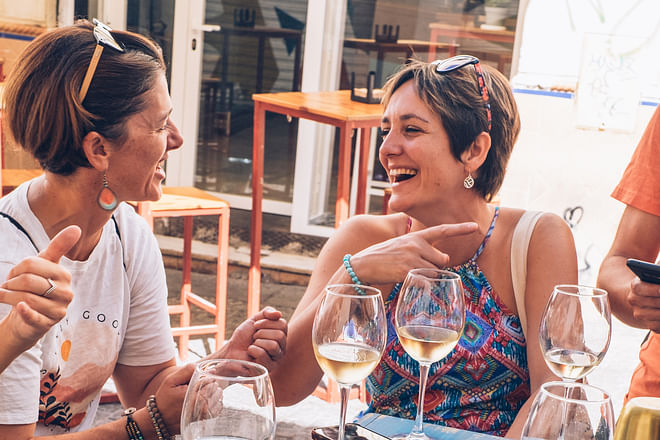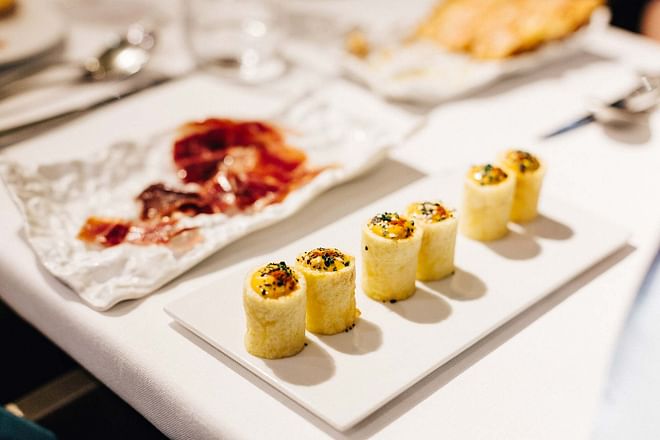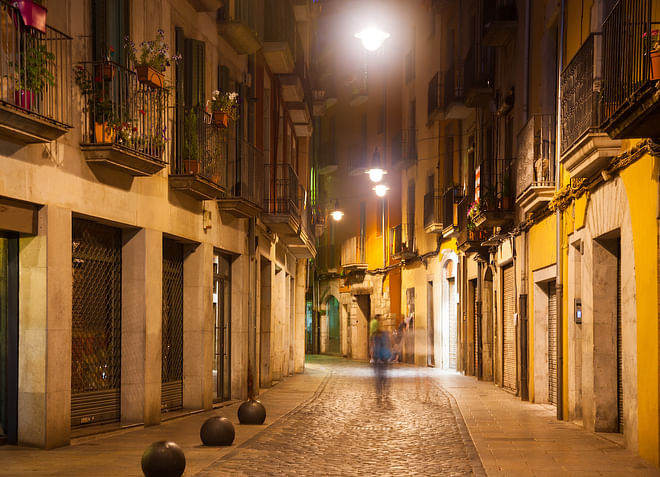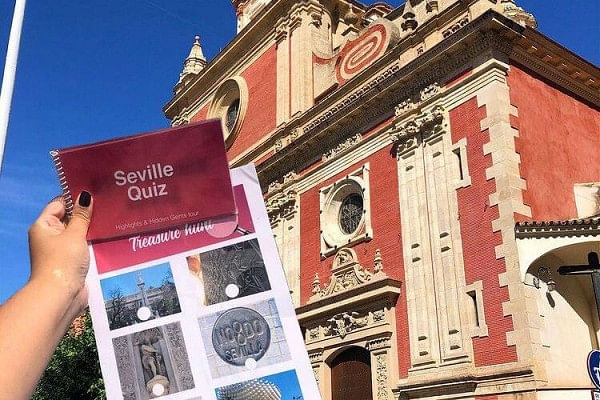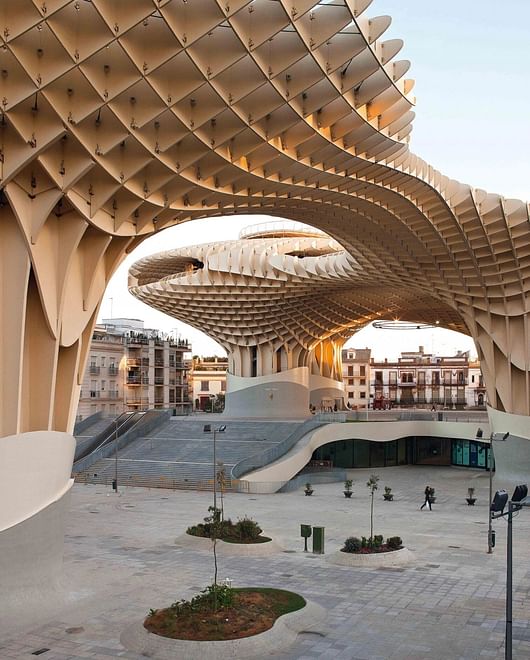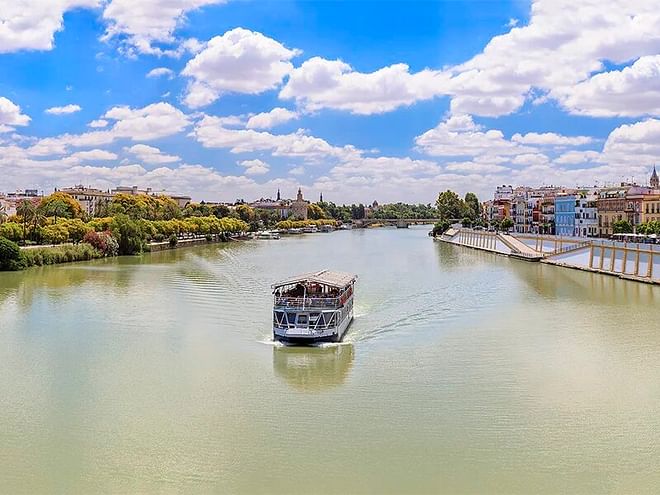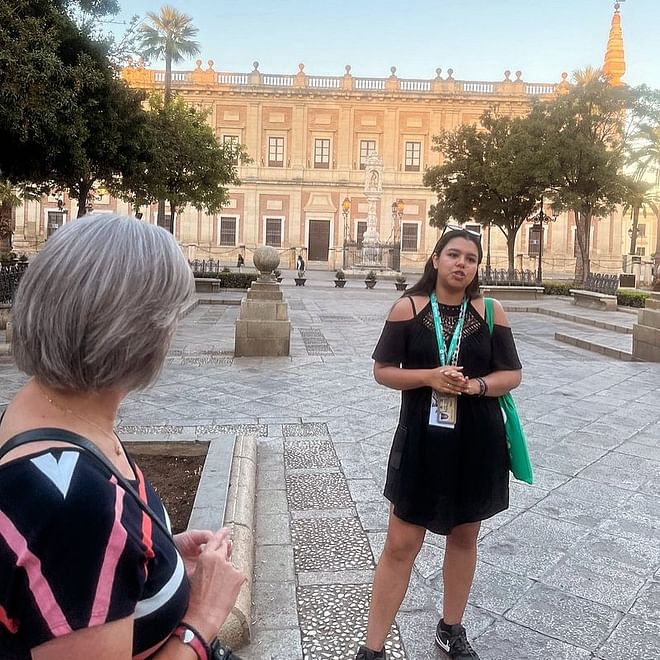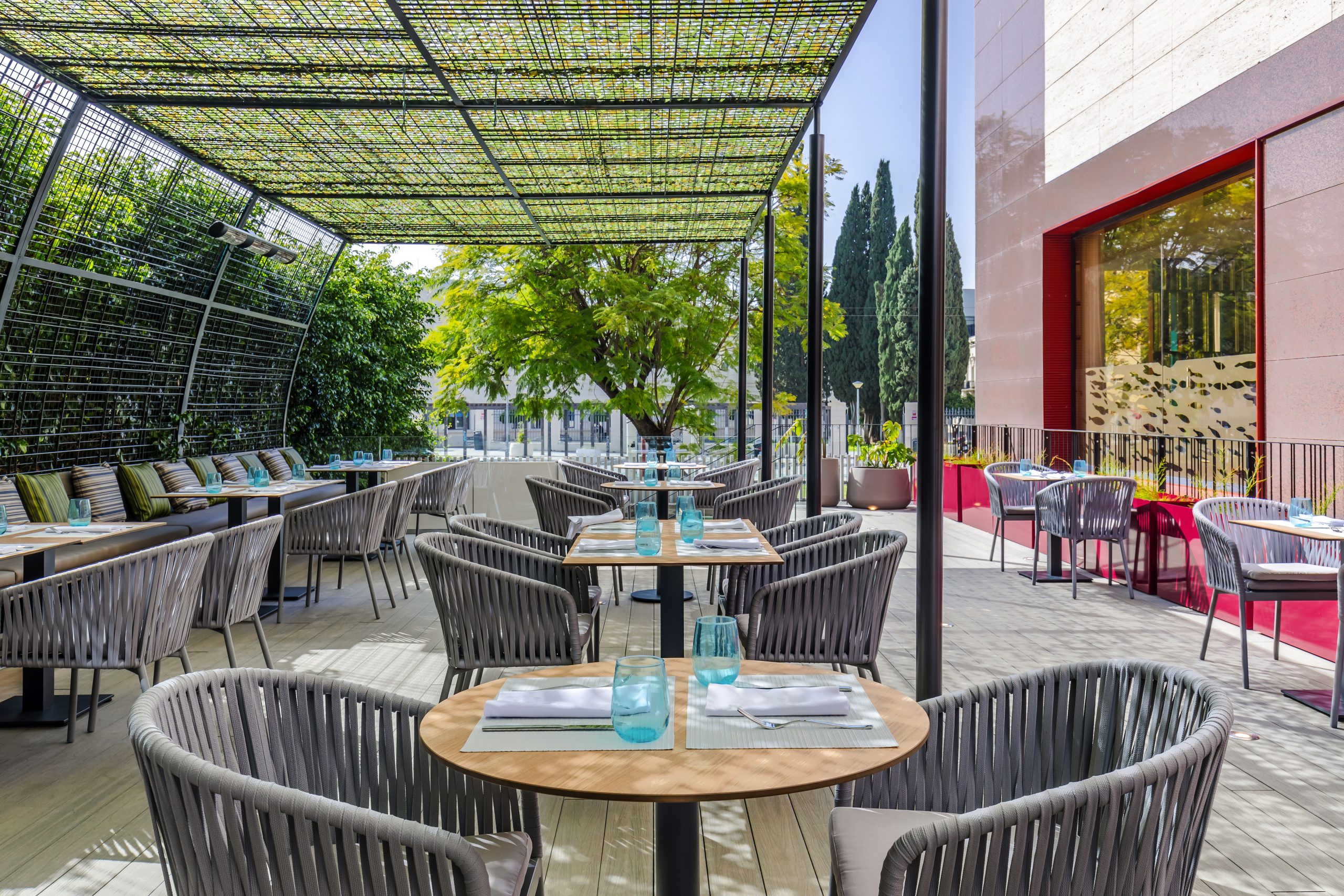El Arenal neighbourhood is one of the busiest neighbourhoods in Seville, buzzing with activity and a top destination for tourists who visit the city. It is part of the Old Town and sits in a triangle formed by Paseo de Colón on one side, and Calle Adriano and Calle Dos de Mayo on the other. In its heyday, back in the sixteenth and seventeenth centuries, it connected Spain to the Indies because boats laden down with gold and silver were moored here when they returned from the mine at Potosí and other locations in the Americas. El Arenal was so cosmopolitan that it was nicknamed “the Babylon of the world” in the sixteenth century.
Today, backed by the weight of history, it retains an air of its powerful and splendid past. The famous Torre del Oro [Tower of Gold], La Maestranza bullring, the Postigo del Aceite [Gate of Oil] and the Torre de la Plata [Tower of Silver] are symbols and emblems of this charismatic neighbourhood in the heart of Seville.
Towers and walls
El Arenal sits in what was once the walled centre of Seville, and these walls had majestic defensive towers that ran from the Guadalquivir river to the Alcázar. Today, only the Tower of Gold, the Tower of Silver and the Abd el Aziz Tower survive. The Postigo del Aceite, one of the gates through the ancient walls, can also still be seen between Calle Dos de Mayo and Calle Almirantazgo streets. It supposedly earned its name because oils and other fats were brought to the city through this entrance.
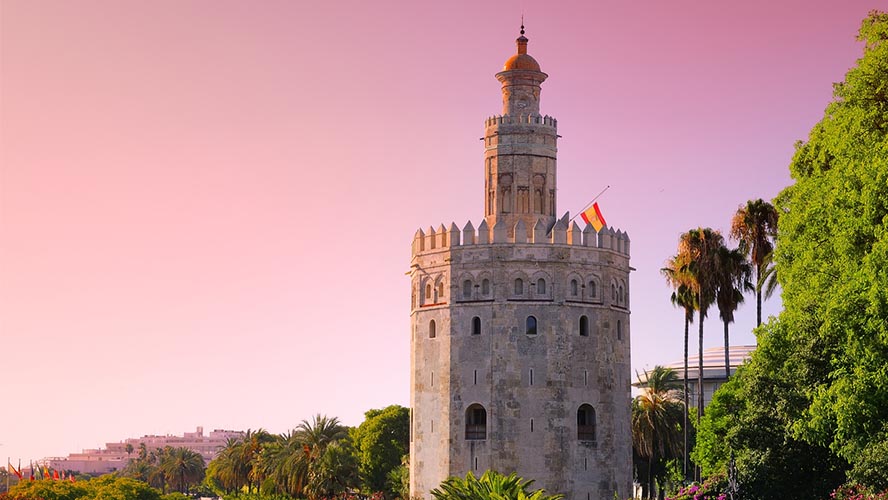
With just 4,000 registered inhabitants, El Arenal sits on the left bank of the Guadalquivir river. During the day, its streets fill with terraces and throng with passers-by who are happy to enjoy the almost year-round warm weather which Seville is so famous for. El Arenal lies between what was once the ancient Puerta de Triana in the old wall and the magnificent thirteenth-century Tower of Gold. It therefore borders three historic neighbourhoods: Museo, Alfalfa and Santa Cruz.
Tributes in El Arenal
Let’s start our journey on leafy and peaceful Paseo de Colón, which runs parallel to the Guadalquivir river. This avenue pays tribute to the man who discovered America for Europeans, and is home to the La Maestranza bullring, considered to be the cathedral of bullfighting. Statues honouring famous bullfighters Curro Romero and Pepe Luis Vázquez, as well as Carmen la Cigarrera, the star of Bizet’s world-famous opera, can be found here.
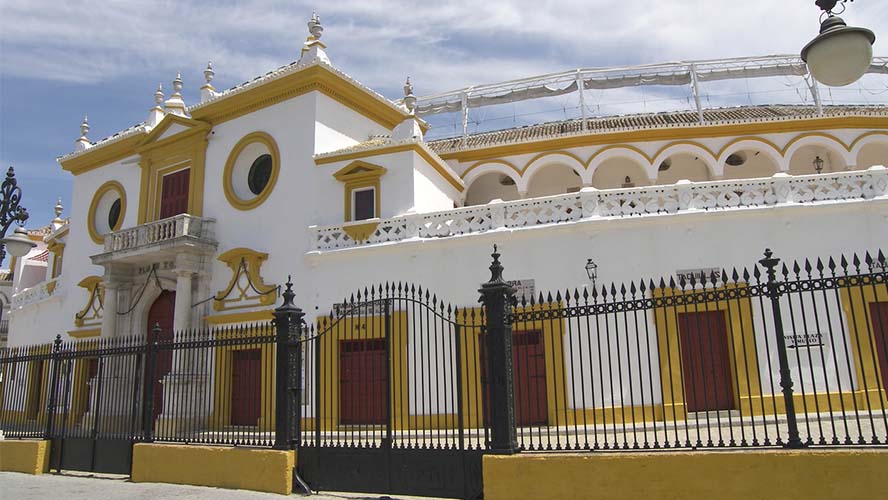
Bulls, opera and religious devotion
As you stroll down the avenue you will pass the opera theatre, also called La Maestranza, which was built for the 1992 Universal Exhibition. The impressive Tower of Gold stands close by; today, it houses the Maritime Museum. In addition to bulls and opera, El Arenal is also renowned for its passionate religious devotion. A large number of hermandades and cofradías (brotherhoods) are based here, whose members excitedly dream of the Semana Santa (Holy Week) festivities all year round.
Paseo de Colón borders the Marqués de Contadero gardens, which offer wonderful views across the river to Triana neighbourhood and its bridges. It is a slice of Seville where visitors can relax as they stroll along the promenade or rest at tables in the shade. Paseo de Colón runs next to the Guadalquivir and the passenger boats that cruise up and down the river stop here, as do the tourist buses.
Calle Adriano: bars and restaurants
Neighbouring Calle Adriano is the heart of the district. It runs from Paseo de Colón to the square at Puerta del Arenal. The street is lined with bars and restaurants and also runs past the rear of the bullring. This is where the Hermandad del Baratillo is based; it is one of the most important brotherhoods and its procession leaves the church on Holy Wednesday. Why is the brotherhood called ‘El Baratillo’ (the flea market)? Apparently, the name can be traced back to a time when street vendors sold their goods in the neighbourhood.
According to experts, the name originated in the sixteenth century, when a street market was set up for second-hand dealers, thieves and pickpockets to sell the fruits of their stealing and underhand scams. This theory is proven by referencing Cervantes himself, who describes his characters Rinconete and Cortadillo selling shirts in the market that they have swiped off a Frenchman. Even picaresque author Guzmán de Alfarache said, referring to this street market, that “white clothes sold well”.
Seville shipyard and Calle Dos de Mayo
All this was normal for the age. After all, America had recently been discovered and El Arenal was at the heart of the lively port activity: merchants, stevedores, dockers, sailors and chief mates were endlessly to-ing and fro-ing here. The neighbourhood was right next to the medieval building of the Atarazanas, the shipyard, where the boats that left Seville for the Americas were built and repaired.
Continuing with our stroll, we now head towards Calle Dos de Mayo, another of the main streets vital to life in El Arenal neighbourhood. It runs from Paseo de Colón to Avenida de la Constitución, passing the shipyard until it reaches the Gate of Oil. This is an excellent place to appreciate what remains of Seville’s old wall and, if you continue towards Calle del Arte, you will reach El Postigo, a busy market where hand-crafted goods are for sale.
Other treasures of El Arenal
El Arenal is also home to other great treasures, such as La Maestranza de Artillería, the church of San Jorge and the Hospital de la Caridad, a jewel of the Sevillian Baroque that houses works by Murillo and Zurbarán. Las Naves del Barranco is also worth visiting; this iron building was designed by Eiffel. The Casa de Contratación de Indias was also built here in 1503, before being later moved to the Alcázar, while a branch of the tax office now sits on the site where the old customs building was once located.
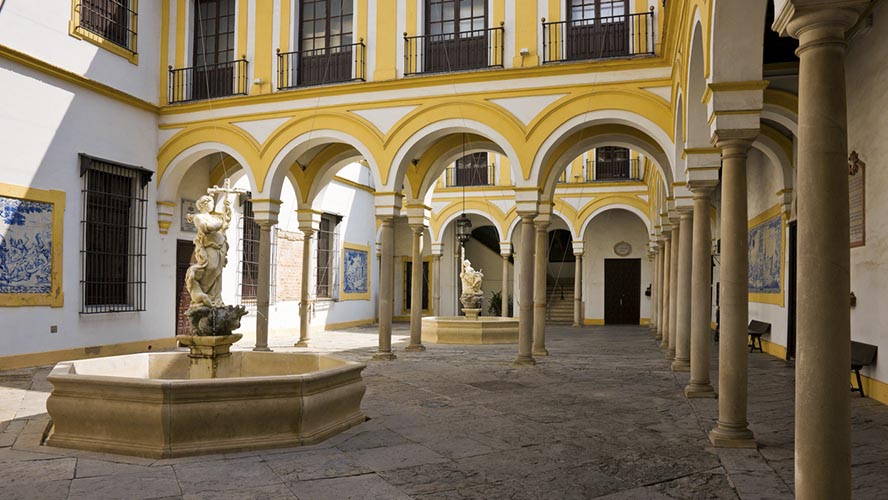
As an award for your long walk through this beautiful Seville neighbourhood, it is time to head to the Mercado del Arenal in Calle Pastor y Landero, constructed over the old Pópulo prison. The market is located in a multifunctional building by architect Juan Talavera and is brimming with stands that specialise in tea, wine, coffee, ecological products and hand-crafted items. Wine-tasting sessions are held from time to time and you can also buy vegan food.
So if you are travelling to Seville, don’t forget: be sure to visit El Arenal neighbourhood and immerse yourself in the unique history of a city that loves hustle and bustle, opera, bullfighting and art.
























































